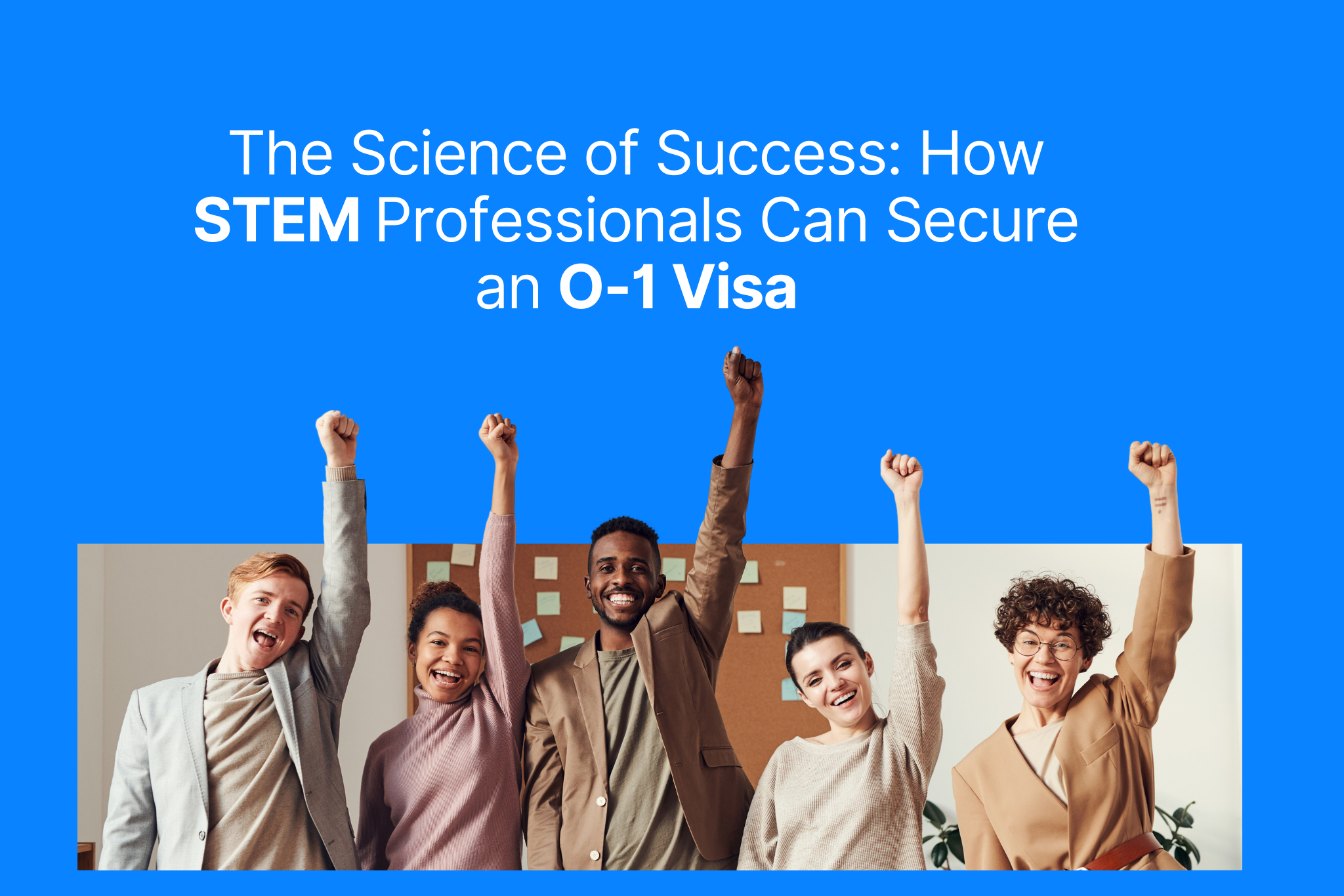The O-1 visa is often called the “extraordinary ability visa,” designed for individuals who have reached the pinnacle of their field. For STEM (Science, Technology, Engineering, and Mathematics) professionals, obtaining an O-1 visa offers a pathway to work and live in the U.S. based on exceptional achievements.
In this article, we’ll explore the eligibility requirements, strategies for meeting the criteria, and practical tips for STEM professionals seeking an O-1 visa.
What is the O-1 Visa?
The O-1 visa is a non-immigrant visa category reserved for individuals with extraordinary ability in sciences, arts, education, business, or athletics. For STEM professionals, the focus is primarily on the O-1A visa, which pertains to achievements in sciences, education, business, or athletics.
The key is proving that the individual has risen to the top of their field, which is assessed based on specific criteria.
Eligibility Requirements for STEM Professionals
To qualify for the O-1A visa, you must demonstrate extraordinary ability through sustained national or international acclaim. This is typically proven by meeting at least three of the following eight criteria:
- Awards and Honors
- Receiving a major award, such as a Nobel Prize, is the gold standard, though it’s not a requirement.
- More commonly, lesser-known but still prestigious honors, such as grants, fellowships, or industry awards, can help satisfy this criterion.
- Membership in Prestigious Organizations
- Membership in organizations that require outstanding achievements, such as IEEE or ACM Fellow status, can support your application.
- Published Material About You or Your Work
- Articles, interviews, or profiles in reputable journals, news outlets, or industry websites help demonstrate your recognition.
- Participation as a Judge of Others’ Work
- Being invited to review journal articles, judge competitions, or evaluate grant proposals shows recognition of your expertise.
- Original Contributions of Major Significance
- Inventions, patents, groundbreaking research, or technologies that have had a significant impact on your field or industry.
- Authorship of Scholarly Articles
- Publications in peer-reviewed journals, book chapters, or conference proceedings relevant to your field.
- Leading or Critical Role in an Esteemed Organization
- Serving as a principal investigator, project leader, or department head in a renowned company, university, or research lab.
- High Salary or Remuneration
- Evidence of earning a salary that places you in the top percentile of your field.
Tailoring the O-1 Visa Case for STEM Professionals
For STEM professionals, meeting these criteria often requires a strategic approach. Here’s how to optimize your petition:
1. Focus on Your Unique Contributions
STEM fields are vast, and not every accomplishment is extraordinary by O-1 standards. Focus on:
- Patents and innovations with measurable impact.
- Contributions that solve significant global or industry problems.
2. Compile Strong Documentation
Each claim in your petition needs robust evidence, such as:
- Letters from industry leaders attesting to your contributions.
- Media coverage or reports highlighting the importance of your work.
- Peer-reviewed publications with citation metrics to show influence.
3. Leverage Employer Support
Employers can strengthen your case by:
- Providing letters of recommendation.
- Highlighting your leadership or unique role in company projects.
- Offering salary records or job descriptions to validate your expertise.
4. Seek Expert Guidance
Immigration attorneys and petition consultants can ensure your case meets USCIS requirements.
Case Study: A STEM Success Story
Dr. Jane Roberts is a data scientist specializing in artificial intelligence. She successfully obtained an O-1 visa based on the following:
- Original Contributions: Dr. Roberts developed a machine-learning algorithm that optimized logistics for a Fortune 500 company, saving millions of dollars annually.
- Scholarly Articles: She authored five papers in top-tier AI journals, cited extensively by other researchers.
- Judging Expertise: Dr. Roberts reviewed submissions for NeurIPS, one of the most prestigious AI conferences.
- Media Recognition: Her work was profiled in a major industry magazine and cited by national newspapers.
Her attorney crafted a narrative that tied these achievements to the national interest, ensuring that the USCIS evaluator understood the significance of her contributions.
Common Challenges and How to Overcome Them
1. Insufficient Evidence of Acclaim
Many STEM professionals underestimate their qualifications or fail to document them adequately. Overcome this by:
- Gathering recommendation letters from recognized experts.
- Highlighting metrics like citation counts, journal impact factors, or economic impact.
2. Difficulty Proving National or International Impact
Your work must be shown to extend beyond your organization. Address this by:
- Demonstrating industry-wide adoption or recognition of your work.
- Providing letters or articles from third-party organizations or experts.
3. Language Barriers in Documentation
Non-English publications, awards, or memberships may require certified translations. Ensure these are prepared to USCIS standards.
The Role of Veripass in Your O-1 Visa Journey
Navigating the O-1 visa process requires careful preparation and strategic presentation. At Veripass, we specialize in helping STEM professionals build compelling cases. We offer:
- Expert evaluation of your achievements against O-1 criteria.
- Assistance in drafting recommendation letters and compiling evidence.
- Comprehensive petition preparation and review.
Additional Tips for STEM Professionals
- Start Early
The O-1 visa application process can take months. Begin collecting evidence, drafting letters, and consulting with attorneys well in advance. - Highlight Multidisciplinary Impact
If your work intersects with multiple fields, such as AI in healthcare or blockchain in finance, emphasize this broader relevance. - Maintain Professional Visibility
Participating in conferences, publishing regularly, and engaging with industry media enhances your profile.
Conclusion
Securing an O-1 visa as a STEM professional is a testament to your extraordinary ability and contributions to your field. By strategically aligning your achievements with the O-1 criteria and presenting a well-documented case, you can increase your chances of approval.
Whether you’re an innovator in renewable energy, a researcher advancing AI, or an engineer revolutionizing space technology, the O-1 visa can be your gateway to new opportunities in the U.S. Let Veripass guide you on your journey to success.
